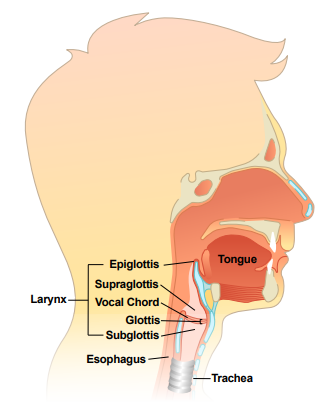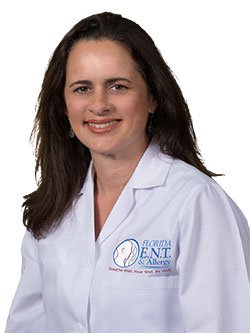 Sore Throat
Sore Throat
Pain or discomfort of the throat, made worse when swallowing, not caused by injury.
Causes
- Cold: Sore throat is a common symptom for 24 hours, followed by a cough and runny nose.
- Strep Pharyngitis: Not accompanied by other cold symptoms. Pus is visible on the tonsils at peak age between 5 and 15 years old. Antibiotics often recommended.
- Mono: Mainly occurs in teens and young adults. Often accompanied by fever and widespread swollen lymph nodes. Similar to strep, pus can also be visible on the tonsils. Must be diagnosed with blood tests.
- Post-Nasal Drip: Caused by drainage from a sinus infection, oftentimes viral. Clearing of the throat causes irritation.
- Abscess of Tonsil: A serious bacterial infection of the tonsil can spread to surrounding areas. Symptoms include trouble swallowing, fever and one-sided throat pain.
Hoarseness
Voice is raspy and deeper than usual, often accompanied by a cough.
Causes
- Laryngitis: Medical term for a hoarse voice caused by an infection or irritation of the larynx (voice box) and vocal cords. In children, it is often caused by a virus and the onset is slow. Can lead to Croup in younger children.
- Allergies: When caused by an allergen, like pollen, onset is sudden. Watery eyes and runny nose may also occur
- Overuse of Vocal Cords: Shouting, yelling or loud singing can cause hoarseness.
Difficulty Swallowing
Dysphagia is the medical term for issues with swallowing. Endoscopic evaluation of swallowing tests are recommended.
Causes
- Acid Reflux Disease: Most common cause of dysphagia. Often caused by issues in the esophagus, such as an ulcer, a stricture (narrowing of the esophagus), or less likely a cancer.
- Eosinophilic Esophagitis (EE): Most common in young adults, EE is an allergic inflammatory
condition of the esophagus. Similar symptoms to gastroesophageal reflux disease (GERD).
If throat symptoms include difficulty breathing or swallowing, we recommend seeking immediate specialized medical care.
Tampa Speech Pathologists
Florida E.N.T. & Allergy’s Speech and Language Pathologists offer the latest technology speech language pathology and diagnosis of voice disorders. In addition to providing speech language pathology in Tampa, We also offer evaluation and treatment of swallowing disorders. Our Tampa speech-language pathologists have earned certifications of clinical competence in speech-pathology through the American Speech-Language-Hearing Association.
Endoscopic Evaluation of Swallowing
An endoscopic evaluation of swallowing is a test that may be performed to diagnose swallowing difficulties. Patients who suffer from dysphagia, or difficulty swallowing, may undergo an endoscopy to determine the cause of their swallowing problem.
The endoscopic evaluation of swallowing test is performed with a thin, lighted tube known as an endoscope. Prior to the procedure, a topical anesthetic may be sprayed in the patient’s nose and throat. The endoscope is then placed into the throat. Food coloring is then placed onto a variety of foods, and fed to the patient. The food coloring makes it easier for the doctor to see how the food travels down the throat. The doctor will then be able to view the throat and swallowing process on a computer screen.
After the test, the speech pathologist will review the results with the requesting physician, and a customized therapy plan will be created to address the individual patient’s condition and treatment.



